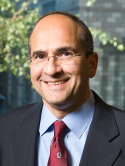Salvage of tissue expander in the setting of mastectomy flap necrosis: A 13-year experience using timed excision with continued expansion Journal Article
| Authors: | Antony, A. K.; Mehrara, B.; McCarthy, C. M.; Zhong, T.; Kropf, N.; Disa, J. J.; Pusic, A.; Cordeiro, P. G. |
| Article Title: | Salvage of tissue expander in the setting of mastectomy flap necrosis: A 13-year experience using timed excision with continued expansion |
| Abstract: | BACKGROUND: Mastectomy flap necrosis after immediate tissue expander placement can have profound implications, resulting in prosthetic infection necessitating tissue expander removal. The purpose of this investigation was to evaluate the safety and efficacy of timed, surgical excision during continued serial expansion in the setting of mastectomy flap necrosis and to identify an algorithm for surgeons faced with the management of this difficult problem. METHODS: Consecutive patients in whom documented mastectomy flap necrosis developed following immediate tissue expander placement from 1995 to 2008 were identified. Patient demographic, reconstructive, and complication data were obtained from a prospectively maintained clinical database. Medical records were then retrospectively reviewed to further characterize the extent of mastectomy flap necrosis and its management. RESULTS: Over the 13-year study period, 178 patients with documented mastectomy flap necrosis following immediate tissue expander were identified. In 58 patients (33 percent), surgical excision of the mastectomy flap necrosis was performed. Surgical excision occurred a mean 36 days (range, 8 to 153 days) after tissue expander placement. Mean surface area of eschar excised was 42.5 cm (range, 2.5 to 240 cm). In nine (15.5 percent) of the 58 patients, resection of such an extensive area of mastectomy flap necrosis necessitated explantation of the tissue expander and subsequent flap closure (local advancement flaps, n = 8; latissimus flap, n = 1). Of the remaining patients, only three (6 percent) developed a subsequent infection necessitating the premature removal of a tissue expander. CONCLUSIONS: Timed excision with continued expansion is a straightforward procedure associated with a low incidence of failure. This approach allows for salvage of a significant percentage of threatened tissue expanders and may be coordinated with adjuvant oncologic therapy without excessive delays. ©2009American Society of Plastic Surgeons. |
| Keywords: | implant; major clinical study; plastic surgery; surgical flaps; adjuvant therapy; chemotherapy, adjuvant; radiotherapy, adjuvant; demography; mastectomy; incidence; breast neoplasms; data base; explant; graft necrosis; latissimus dorsi flap; medical record review; oncology; retrospective study; algorithms; device removal; necrosis; prosthesis-related infections; tissue expansion; tissue expansion devices |
| Journal Title: | Plastic and Reconstructive Surgery |
| Volume: | 124 |
| Issue: | 2 |
| ISSN: | 0032-1052 |
| Publisher: | Lippincott Williams & Wilkins |
| Date Published: | 2009-08-01 |
| Start Page: | 356 |
| End Page: | 363 |
| Language: | English |
| DOI: | 10.1097/PRS.0b013e3181aee9a3 |
| PUBMED: | 19644248 |
| PROVIDER: | scopus |
| DOI/URL: | |
| Notes: | --- - "Cited By (since 1996): 1" - "Export Date: 30 November 2010" - "CODEN: PRSUA" - "Source: Scopus" |
Altmetric
Citation Impact
BMJ Impact Analytics
Related MSK Work








